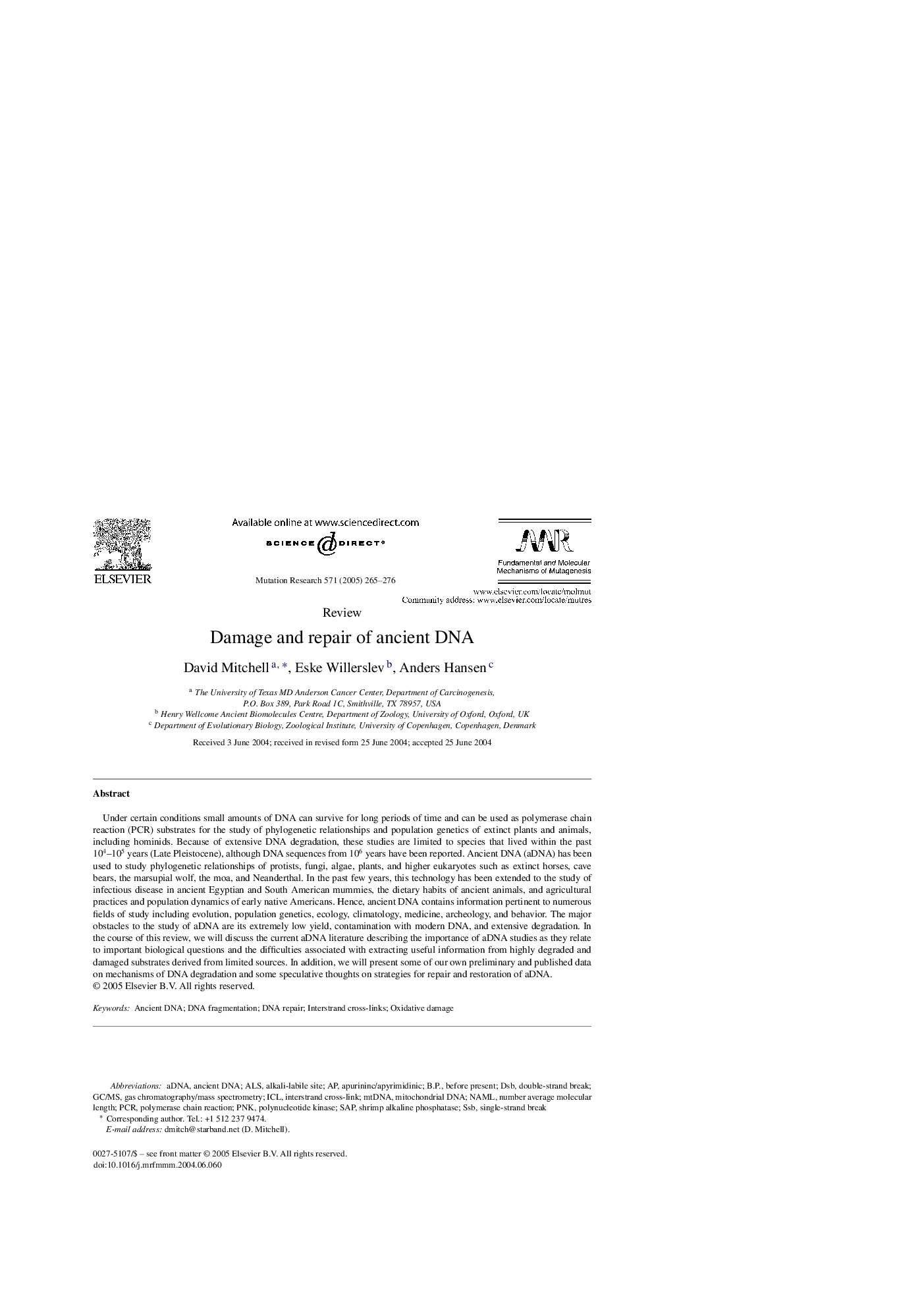| کد مقاله | کد نشریه | سال انتشار | مقاله انگلیسی | نسخه تمام متن |
|---|---|---|---|---|
| 9909166 | 1548437 | 2005 | 12 صفحه PDF | دانلود رایگان |
عنوان انگلیسی مقاله ISI
Damage and repair of ancient DNA
دانلود مقاله + سفارش ترجمه
دانلود مقاله ISI انگلیسی
رایگان برای ایرانیان
کلمات کلیدی
DSBSSBICLPNKb.p.Interstrand cross-link - Cross-link میان گذرInterstrand cross-links - Cross-links میان گذرگاهAncient DNA - DNA باستانیMitochondrial DNA - DNA میتوکندریاGC/MS - GC / MSOxidative damage - آسیب اکسیداتیوALS - بیماری اسکلروز جانبی آمیوتروفیکDNA repair - ترمیم DNADNA fragmentation - تقسیم DNAmtDNA - دیانای میتوکندریاییdouble-strand break - شکست دو ردیفsingle-strand break - شکستن تک رشتهSAP - شیرهaDNA - عدنانbefore present - قبل از حضورshrimp alkaline phosphatase - میگو آلکالن فسفاتازpolymerase chain reaction - واکنش زنجیره ای پلیمرازPCR - واکنش زنجیرهٔ پلیمرازpolynucleotide kinase - پولینوکوتید کینازgas chromatography/mass spectrometry - کروماتوگرافی گاز / طیف سنج جرمی
موضوعات مرتبط
علوم زیستی و بیوفناوری
بیوشیمی، ژنتیک و زیست شناسی مولکولی
تحقیقات سرطان
پیش نمایش صفحه اول مقاله

چکیده انگلیسی
Under certain conditions small amounts of DNA can survive for long periods of time and can be used as polymerase chain reaction (PCR) substrates for the study of phylogenetic relationships and population genetics of extinct plants and animals, including hominids. Because of extensive DNA degradation, these studies are limited to species that lived within the past 104-105 years (Late Pleistocene), although DNA sequences from 106 years have been reported. Ancient DNA (aDNA) has been used to study phylogenetic relationships of protists, fungi, algae, plants, and higher eukaryotes such as extinct horses, cave bears, the marsupial wolf, the moa, and Neanderthal. In the past few years, this technology has been extended to the study of infectious disease in ancient Egyptian and South American mummies, the dietary habits of ancient animals, and agricultural practices and population dynamics of early native Americans. Hence, ancient DNA contains information pertinent to numerous fields of study including evolution, population genetics, ecology, climatology, medicine, archeology, and behavior. The major obstacles to the study of aDNA are its extremely low yield, contamination with modern DNA, and extensive degradation. In the course of this review, we will discuss the current aDNA literature describing the importance of aDNA studies as they relate to important biological questions and the difficulties associated with extracting useful information from highly degraded and damaged substrates derived from limited sources. In addition, we will present some of our own preliminary and published data on mechanisms of DNA degradation and some speculative thoughts on strategies for repair and restoration of aDNA.
ناشر
Database: Elsevier - ScienceDirect (ساینس دایرکت)
Journal: Mutation Research/Fundamental and Molecular Mechanisms of Mutagenesis - Volume 571, Issues 1â2, 1 April 2005, Pages 265-276
Journal: Mutation Research/Fundamental and Molecular Mechanisms of Mutagenesis - Volume 571, Issues 1â2, 1 April 2005, Pages 265-276
نویسندگان
David Mitchell, Eske Willerslev, Anders Hansen,